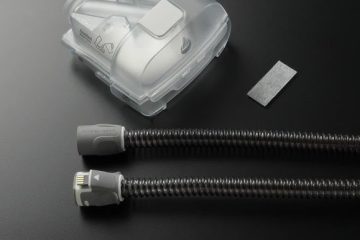In hazardous environments where safety is paramount, visual inspection plays a critical role in ensuring the integrity of equipment and structures. Traditional inspection methods often fall short in these challenging conditions, where human access is limited and the risk of accidents is high. However, with the advancements in technology, hazardous environment borescope have emerged as indispensable tools for navigating danger and conducting thorough inspections in such environments.
Hazardous environments encompass a wide range of industries and settings, including oil and gas refineries, chemical plants, power generation facilities, and confined spaces such as tanks, pipes, and vessels. These environments pose significant risks to human health and safety due to factors such as toxic gases, high temperatures, confined spaces, and the presence of flammable materials. Traditional visual inspection methods are often impractical or unsafe in these conditions, making it essential to employ specialized equipment like hazardous environment borescopes.
What Are Hazardous Environment Borescopes?
Hazardous environment borescopes are rugged, durable, and specially designed to withstand the harsh conditions prevalent in hazardous environments. Unlike conventional borescopes, which may not be suitable for use in such environments, hazardous environment borescopes are equipped with features that enable safe and efficient inspection operations. These features typically include explosion-proof housing, intrinsically safe components, and advanced imaging capabilities.
Key Features And Benefits
Explosion-Proof Housing: One of the most critical features of hazardous environment borescopes is their explosion-proof housing. This feature ensures that the borescope is safe to use in environments where the risk of explosions or fires is high, such as areas with combustible gases or vapors. The robust construction of the housing protects the internal components of the borescope from ignition sources, minimizing the risk of accidents.
Intrinsically Safe Components: Hazardous environment borescopes are equipped with intrinsically safe components that are designed to prevent the ignition of flammable gases or dust. These components are specially certified to meet stringent safety standards, providing assurance that the borescope can be safely used in hazardous environments without posing a risk of sparking or causing fires.
Advanced Imaging Capabilities: Another key benefit of hazardous environment borescopes is their advanced imaging capabilities. These borescopes are equipped with high-resolution cameras and powerful LED lights, allowing operators to capture clear and detailed images and videos of the inspection area. Some models also feature adjustable focus, zoom, and articulation capabilities, enabling operators to navigate complex environments and inspect hard-to-reach areas with precision.
Portability And Versatility: Despite their rugged construction, hazardous environment borescopes are often lightweight and portable, making them easy to transport and maneuver in confined spaces. Many models are also designed for versatility, with interchangeable probes and accessories that allow operators to adapt the borescope to different inspection tasks and environments.
Real-Time Monitoring And Documentation: Hazardous environment borescopes often feature built-in monitors or compatible display devices that allow operators to view inspection footage in real-time. This real-time monitoring capability enables operators to identify potential hazards or anomalies promptly and take appropriate action. Additionally, many borescope systems are equipped with recording and documentation features, allowing inspection footage to be saved for analysis, reporting, and compliance purposes.
Applications Of Hazardous Environment Borescopes
The versatility and reliability of hazardous environment borescopes make them invaluable tools for a wide range of inspection applications in hazardous environments. Some common applications include:
Pipeline Inspection: Hazardous environment borescopes are used to inspect pipelines for corrosion, cracks, leaks, and other defects, helping to ensure the integrity of the pipeline and prevent costly failures or environmental damage.
Tank And Vessel Inspection: These borescopes are utilized to inspect tanks, vessels, and storage containers for signs of corrosion, structural damage, or contamination, enabling operators to identify issues early and prevent hazardous leaks or spills.
Boiler And Furnace Inspection: Hazardous environment borescopes are employed to inspect boilers, furnaces, and other high-temperature equipment for signs of wear, damage, or blockages, ensuring safe and efficient operation and minimizing the risk of accidents or downtime.
Confined Space Inspection: In confined spaces such as tanks, silos, and vaults, hazardous environment borescopes are used to conduct visual inspections without the need for human entry, reducing the risk of accidents and exposure to hazardous conditions.
Emergency Response And Rescue: Hazardous environment borescopes are utilized by emergency responders and rescue teams to assess hazardous environments, locate trapped individuals, and plan safe rescue operations in situations such as industrial accidents, natural disasters, or confined space incidents.
Conclusion
In hazardous environments where safety is paramount, hazardous environment borescopes are indispensable tools for conducting thorough inspections while minimizing the risk to human life and property. With their rugged construction, advanced imaging capabilities, and intrinsically safe design, these borescopes enable operators to navigate danger and identify potential hazards with confidence. By leveraging the benefits of hazardous environment borescopes, industries can enhance safety, optimize maintenance procedures, and ensure compliance with regulatory requirements, ultimately safeguarding both personnel and assets in hazardous environments.



